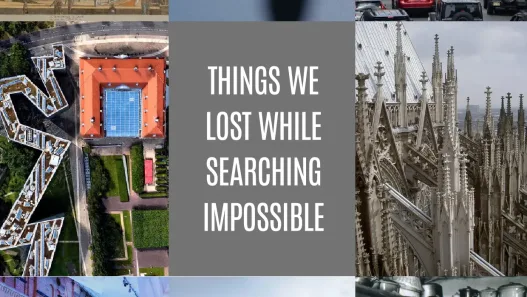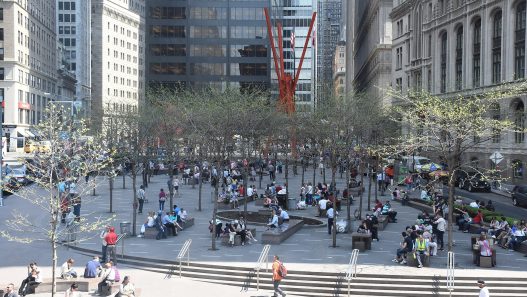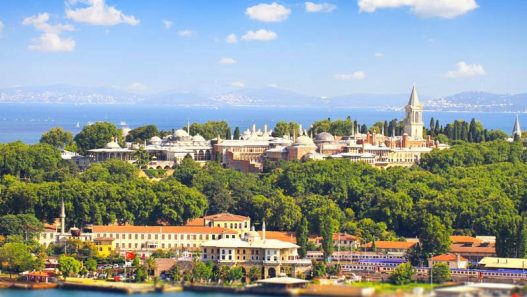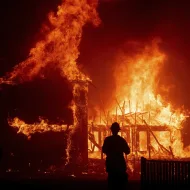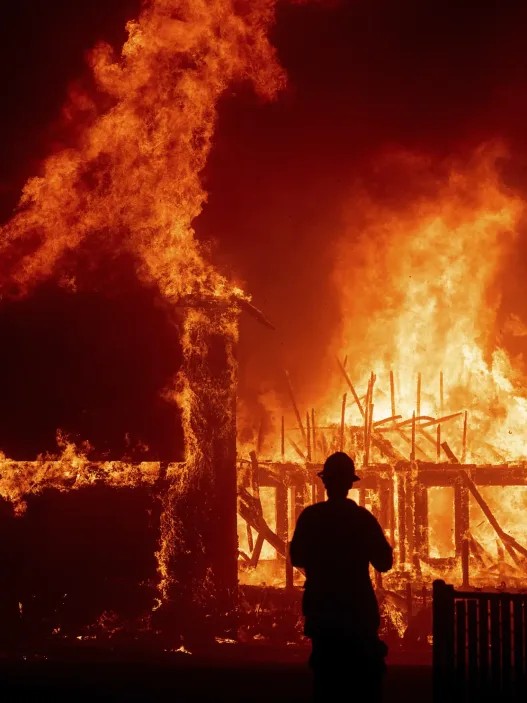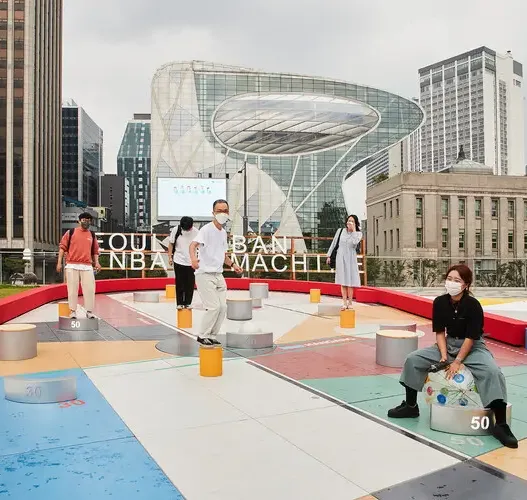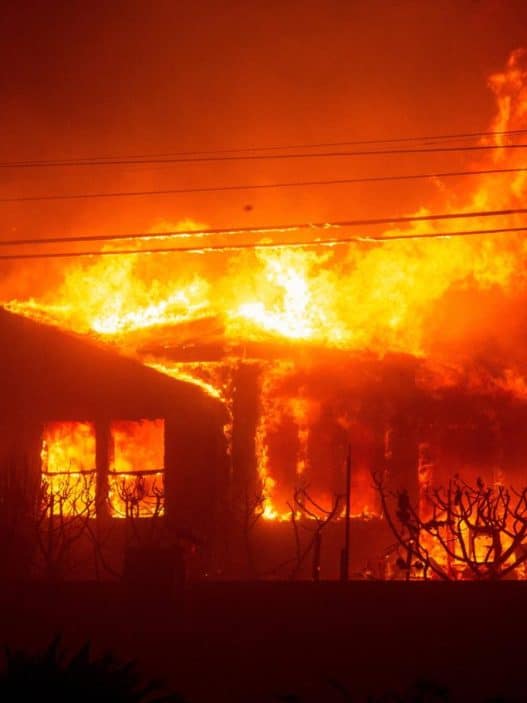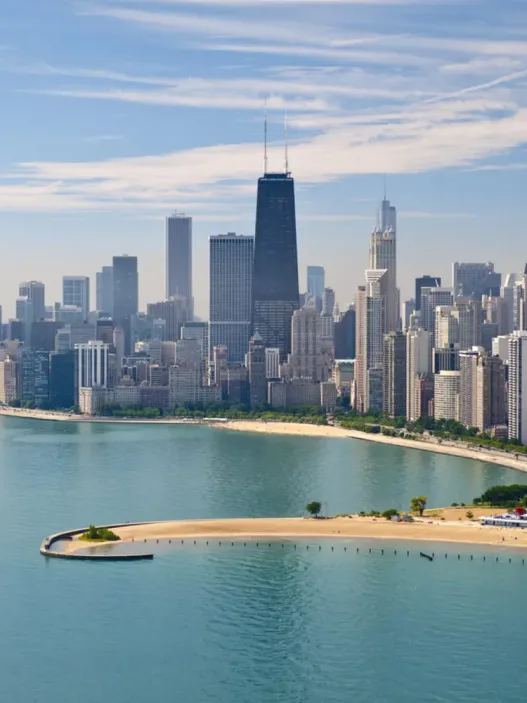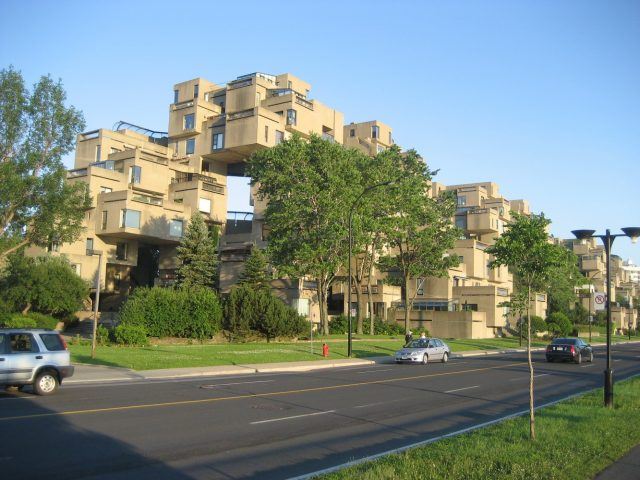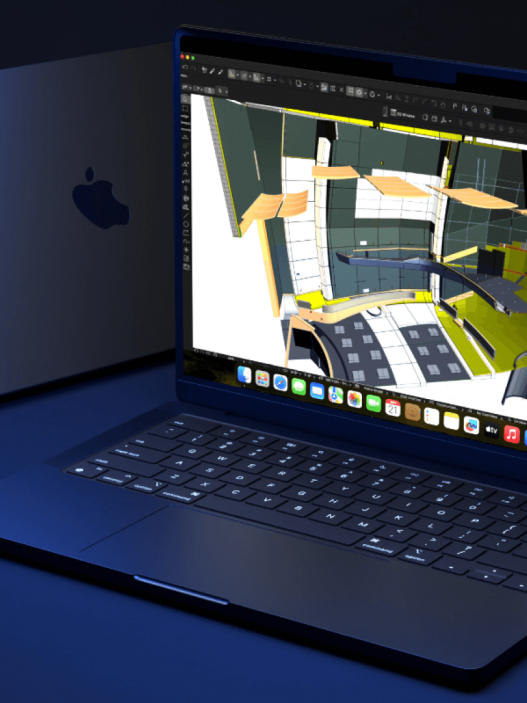Amelia Tavella's school, officially known as the Edmond Simeoni School and Cultural SpaceLumio Schoolrepresents a seamless integration of architecture and the natural landscape of Corsica.
- Project Name: Edmond Simeoni School and Cultural Space.
- WomenLocated on the outskirts of the village of Lumio in Corsica, overlooking the Mediterranean Sea.
- Architect: Amelia Tavella Designed by Amelia Tavella, known for her sensitive approach to architecture in harmony with nature.
- Design Philosophy: Inspired by the wild and romantic character of Corsica, it emphasizes integration with the landscape.
- Architectural Features: Consists of three interconnected buildings symbolizing an upward journey with layered classrooms and cultural areas.
- Materials Used: Constructed using local Balagne stone (granite), honoring the heritage and identity of the region.
- Education Concept: Focuses on creating spaces that encourage freedom and creativity for children and enhance their learning experiences.
- Landscape IntegrationThe design reflects terraced agricultural structures by preserving natural terraces and providing stunning views.
- Artistic Collaboration: Features a staircase designed in collaboration with artist Pauline Guerrier that enriches the educational environment through art.
- Ecological Linksustainability: The project represents a strong commitment to sustainability, aiming to inspire future generations with ecological awareness and creativity.
Located on the outskirts of the village of Lumio, this project follows the acclaimed École A Strega, reiterating Tavella's commitment to educational architecture in harmony with its surroundings.

Context and Significance
Lumio School represents a thoughtful response to the Mediterranean context, combining the village’s identity with its striking natural features. Tavella’s design philosophy emphasizes respect for the landscape, demonstrating a deep understanding of Corsican culture and its environment.
Design Philosophy
Tavella explains his vision: “Lumio is about building within the contours of a heart.” This sentiment reflects Lumio’s commitment to creating spaces that not only coexist with nature, but also celebrate it.
Architectural Response: Integration with the Landscape
Embracing the Land
The design of Lumio School is characterised by three distinctive buildings that blend in with the slopes of Lumio.terracesInspired by the terraced farming practice known as 'terraced farming', the school reflects the natural contours of the land.
Materiality and Identity
The school pays tribute to its Corsican heritage by using Balagne granite. This material choice not only enhances the building’s aesthetics, but also strengthens its connection to the local identity by shaping the student experience.
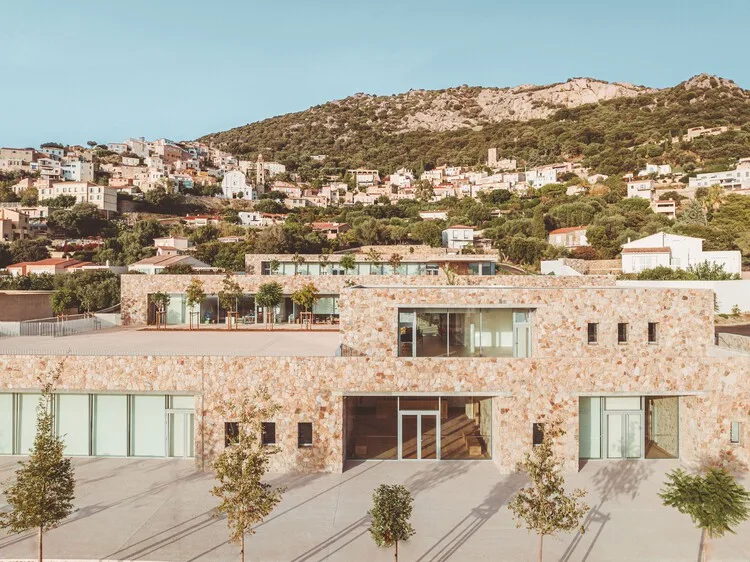



Spatial Organization: A Journey of Ascension
Three Layer Design
The school’s three-tiered structure symbolizes a learning journey. At the top, primary classrooms offer expansive sea views, while the kindergarten and cultural center are nestled in the valley, creating a sense of progress and discovery.
Protection of Natural Terraces
The design allows the landscape to dictate the building’s layout, preserving the site’s natural terraces. The roofs of the structures serve as play areas that encourage children to interact with their surroundings in a fun and educational way.
Connectivity and Mobility: Inner Street
Open Air Amphitheatre Concept
The interior alley connecting the various floors of the school resembles the steps of an amphitheatre. This design encourages interaction, allowing students to move seamlessly between spaces while enjoying the surrounding landscape.
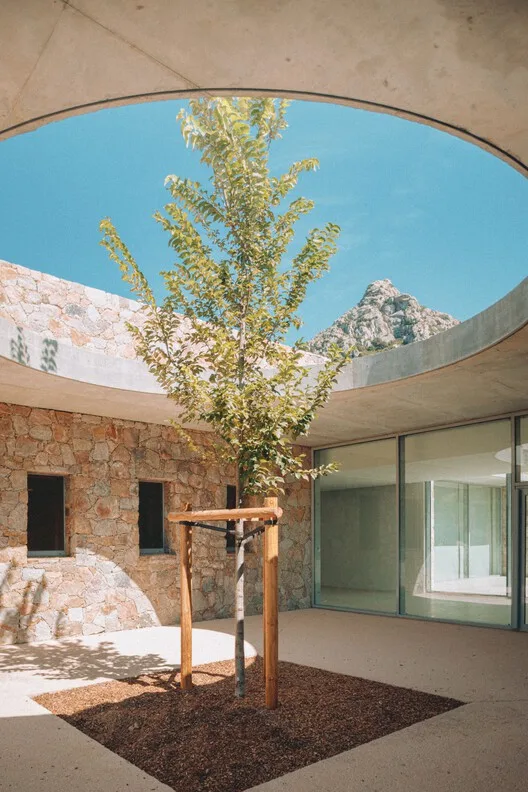



Collaboration with Artists
Tavella’s collaboration with artist Pauline Guerrier on the stairs enriches the educational experience. This artistic element not only adds beauty, but also enriches the learning environment by involving students in a dialogue between art and architecture.
Commitment to Ecology and Ethical Building
Nature as a Guiding Principle
Tavella’s approach emphasizes the importance of integrating nature into his designs. “When I build, I don’t undo,” he says. This philosophy encourages sustainability by ensuring that the natural landscape is celebrated rather than altered.
Ethical Obligation
Lumio School reflects Tavella’s belief in the ethical responsibility of architects. Each project is seen as a challenge to harmonize with the existing environment, ensuring that the building enhances its surroundings rather than detracts from them.
Edmond Simeon School, stands as a testament to Amelia Tavella's architectural vision that combines beauty, education, and ecological responsibility. By creating a space that encourages exploration and respect for nature, the school not only serves its immediate community, but also inspires the next generation of visionaries.

SSS
1. What is Edmond Simeoni School?
Edmond Simeoni School and Cultural Space is a new educational facility designed by Amelia Tavella and located in Lumio, Corsica. It integrates with the natural landscape and serves as a cultural hub for the community.
2. What design philosophy did Amelia Tavella use?
Tavella's design philosophy emphasizes harmony with the natural environment, reflecting the wild and romantic character of Corsica. The architecture aims to blend seamlessly into the landscape while encouraging freedom and creativity for children.
3. How many buildings are there in the school complex?
The school complex consists of three interconnected buildings, each representing different educational stages and functions, including primary classrooms and a cultural center.
4. What materials were used in construction?
The school was built primarily using local Balagne stone (granite), which honors the heritage of the area and contributes to its unique identity.
5. How does the school encourage outdoor learning?
The school's layered design includes open spaces and natural terraces that enhance children's educational experiences by allowing them to play and learn in an immersive natural environment.
6. What is the role of art in the design of the school?
Art is integrated into the architecture through collaborations such as the staircase designed with artist Pauline Guerrier. This approach aims to elevate the educational environment and inspire creativity among students.
7. How does the school address ecological concerns?
The design reflects a commitment to sustainability by preserving natural features, using local materials and encouraging an appreciation for the environment among future generations.
8. What is the importance of the school's location?
The school is strategically positioned to overlook the Mediterranean Sea and major landmarks, creating a strong connection between the educational space and its stunning surroundings.
9. How does the school facilitate community participation?
Edmond Simeoni School serves as both a school and a cultural space, encouraging community involvement and strengthening connections among residents through a variety of programs and events.
10. What is Amelia Tavella's inclusive architectural philosophy?
Tavella believes in a philosophy of inclusivity and adaptation that emphasizes the celebration of nature within architectural projects. He aims to create spaces that enhance the natural environment rather than destroy it.
My Thoughts About Lumio School
Edmond Simeoni School, designed by Amelia Tavella, is an impressive educational space built in harmony with nature in the village of Lumio, Corsica. The structure combines architectural and natural elements to create an environment that enriches the students’ learning experience. Every detail in Tavella’s design pays deep respect to Corsica’s unique landscape and cultural heritage.
The architecture of the school consists of three main structures designed to follow the contours of the natural terrain. These structures function not only as educational spaces but also as a cultural center. In this project, Tavella aims to respond to the beauty and continuity of nature, shaping his architecture by saying "nature is my guest."
The terraced design of the school symbolizes a journey where students can see the sea view. The uppermost classrooms are under the protective supervision of the village, while the lower one is the center for children and cultural activities. The open spaces between these structures encourage children to learn by interacting with nature. Playgrounds are located on natural terraces, allowing children to integrate with their surroundings.
This school is not just an educational institution, but also a place that serves the community. Activities and programs that bring the community together reinforce the school's function as a cultural center. Tavella's approach to combining art with architecture emphasizes the importance of aesthetics and beauty, especially in children's education.
The Edmond Simeoni School is a reflection of Amelia Tavella's architectural philosophy: "When I build, I do not destroy nature; I respect it." This school symbolizes an ecological commitment to train the visionaries of the future.
What do you think about Lumio School? Does this building adequately reflect its relationship with nature and its contribution to society? Are there any elements that influenced you in its design? Don't forget to share your ideas with us. If you want to learn more about other projects, you can also check out our other reviews.
Pampering: Amelia Tavella
Architectural Style: Modern Architecture
Year: 2024
Location: Lumio, Corsica





